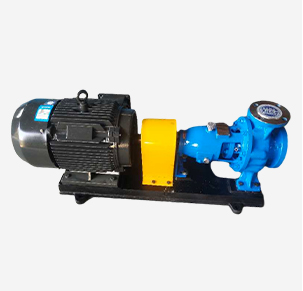Vietnamese
- Afrikaans
- Albanian
- Amharic
- Arabic
- Armenian
- Azerbaijani
- Basque
- Belarusian
- Bengali
- Bosnian
- Bulgarian
- Catalan
- Cebuano
- Corsican
- Croatian
- Czech
- Danish
- Dutch
- English
- Esperanto
- Estonian
- Finnish
- French
- Frisian
- Galician
- Georgian
- German
- Greek
- Gujarati
- Haitian Creole
- hausa
- hawaiian
- Hebrew
- Hindi
- Miao
- Hungarian
- Icelandic
- igbo
- Indonesian
- irish
- Italian
- Japanese
- Javanese
- Kannada
- kazakh
- Khmer
- Rwandese
- Korean
- Kurdish
- Kyrgyz
- Lao
- Latin
- Latvian
- Lithuanian
- Luxembourgish
- Macedonian
- Malgashi
- Malay
- Malayalam
- Maltese
- Maori
- Marathi
- Mongolian
- Myanmar
- Nepali
- Norwegian
- Norwegian
- Occitan
- Pashto
- Persian
- Polish
- Portuguese
- Punjabi
- Romanian
- Russian
- Samoan
- Scottish Gaelic
- Serbian
- Sesotho
- Shona
- Sindhi
- Sinhala
- Slovak
- Slovenian
- Somali
- Spanish
- Sundanese
- Swahili
- Swedish
- Tagalog
- Tajik
- Tamil
- Tatar
- Telugu
- Thai
- Turkish
- Turkmen
- Ukrainian
- Urdu
- Uighur
- Uzbek
- Vietnamese
- Welsh
- Bantu
- Yiddish
- Yoruba
- Zulu
Telephone: +86 13120555503
Email: frank@cypump.com
Th9 . 19, 2024 06:42 Back to list
toilet sewage pump
Understanding Toilet Sewage Pumps Essential Components for Modern Sanitation
Toilet sewage pumps play a crucial role in modern sanitation systems, ensuring that wastewater is effectively transported from residential and commercial properties to treatment facilities. These pumps are vital for maintaining hygiene and preventing environmental contamination, particularly in areas where gravity drainage systems are inadequate.
A toilet sewage pump, often referred to as a macerator pump, is specifically designed to handle the challenging task of moving sewage that contains solid waste. Unlike standard sump pumps, sewage pumps are equipped with sharp blades that grind solid waste into a slurry, making it easier to pump through narrow pipes. This feature is particularly beneficial in basements or lower-level bathrooms, where traditional gravity drainage systems may not reach.
The operation of a toilet sewage pump typically begins when waste exceeds a certain level in the toilet bowl or downstream tank. A float switch activates the pump, which then begins to grind the waste and pump it through the discharge pipe. This process is designed to efficiently move the waste to a central sewage line or septic system, which can be some distance from the source. As a result, toilet sewage pumps enable the installation of bathrooms where they would otherwise be impractical, adding convenience and functionality to homes and businesses.
toilet sewage pump

Installation of a sewage pump can involve several considerations. First, it is crucial to choose the right size and capacity of the pump, taking into account the volume of waste that needs to be processed and the distance it must travel. Typically measured in gallons per minute (GPM), the pump's capacity should match the demands of the property. Additionally, proper installation requires adherence to local plumbing codes to ensure optimal performance and compliance with regulations.
Maintenance of toilet sewage pumps is also essential to promote longevity and performance. Regular inspections are recommended to check for clogs, wear, or malfunctions. Homeowners and property managers should be vigilant about what gets flushed down the toilet. Non-biodegradable items, such as wipes or feminine hygiene products, can quickly cause clogs and lead to pump failures. Keeping an eye on the health of the sewage pump can prevent costly repairs and service interruptions.
In conclusion, toilet sewage pumps are indispensable components of modern plumbing systems, facilitating effective waste management in a range of settings. Their ability to handle solid waste and transport it efficiently makes them a vital technology for ensuring sanitary conditions. With proper selection, installation, and maintenance, these pumps can offer reliable service and contribute to the overall health and hygiene of our communities. As urban areas continue to grow and develop, the importance of effective sewage management will only increase, underscoring the value of toilet sewage pumps in our daily lives.
-
Efficient Self Priming Sewage Pumps for Heavy Duty Use
NewsAug.10,2025
-
pipeline pump - Chi Yuan Pumps Co., LTD. | High Efficiency, Energy Saving
NewsAug.10,2025
-
ISG Series Vertical Pipeline Pump-Chi Yuan Pumps|High Efficiency&Stable Performance
NewsAug.09,2025
-
ISG Series Pipeline Pump - Chi Yuan Pumps Co., LTD. | High Efficiency, Low Noise
NewsAug.09,2025
-
ISG Series Pipeline Pump - Chi Yuan Pumps | Efficiency, Durability
NewsAug.09,2025
-
Non Clog Sewage Pump: Submersible & High-Flow Solutions
NewsAug.09,2025










